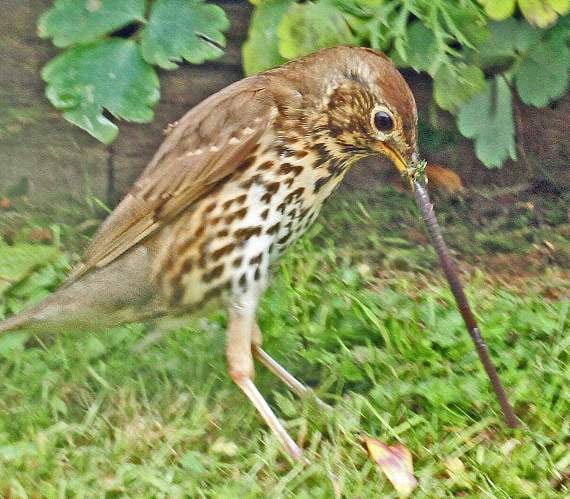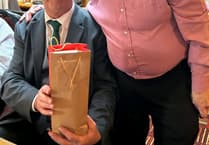In his regular stroll close to home this week, photographer Ray Roberts observes birds, bees and beetles making the most of the fruits and flowers near the village.
There is a wild cherry tree near the village and the fruits are ripening but when the cherries are dark red and ripe, they disappear from the tree. I think there are several birds that keep their eyes on these luscious fruits and enjoy an almost daily treat. They are too high for me to reach anyway.
There is also some Oxford ragwort – Senecio squalidus – growing on the bottom of the hedges. This flower is similar to common ragwort – Senecio jacobaea – with yellow flowers, but have less blooms on the top of its stem. All ragworts are poisonous to farm animals especially horses, but they will not eat the plants as they are growing. If they are poisoned however, it is usually because they have eaten baled hay or silage that was made from grass that had ragwort growing with it in the fields and so the animals do not know what they are eating. On the other hand, bees, wasps and hover flies love the ragwort flowers.
There was several selfheal – Prunella vulgaris – plants in the field with their closely packed heads of purple flowers. This plant relies on long-tongued bees for pollination and as its name suggests it was once used to clear inflammation of the throat and tonsils, in fact its botanical name, prunella or brunella originated from the German word for sore throat.
Lots of red soldier beetles can be seen from July onwards and the best place to spot them is on the large flowers of hogweed where they congregate in sunny weather to hunt small insects and other invertebrates. I walked around the village playing field during the late afternoon and counted nearly seventy of these insects on hogweed flowers. The yellow snapdragon-like flowers of the common, or yellow toadflax – Linaria vulgaris- really brighten up the hedgerows and waste ground during the summer. The mouth of the flower opens if the sides are squeezed and this presents a problem to small flying insect in search of nectar so only the heavier bees with long tongues can press down on the lower lip of the flower to extract its sweetness.
I walked down to Trehunist and noticed a lot of musk mallow – Malva moschata – flowering along the hedge bottom. They have pink blooms and round leaves at the base of the stem but deeply divided leaves around the stalk top beneath the flowers.
A beautiful thrush appeared on the lawn and found a worm that had obviously come to the surface, as they do when it rains. After a long struggle the thrush eventually managed to get the long worm out of the ground and took it away, somewhere quiet presumably, to eat it or possibly to feed it to his young. My wife, Helen, took its picture whilst I was out walking.




